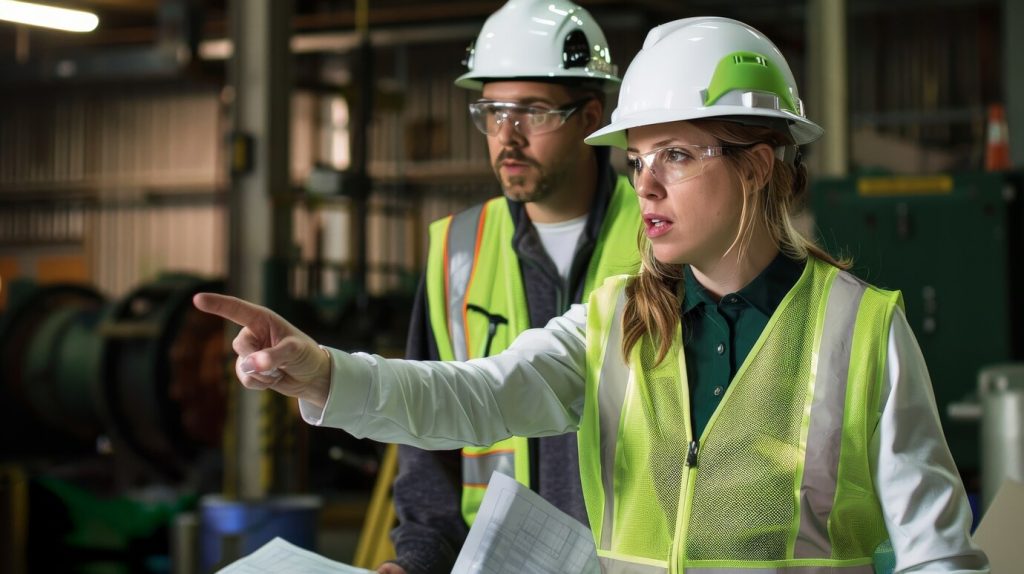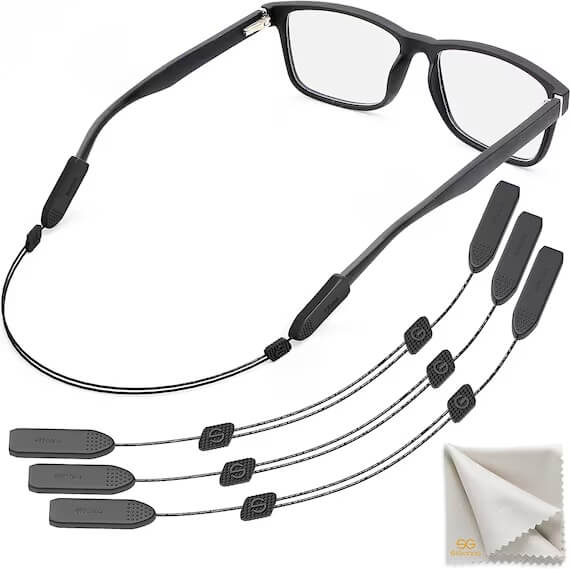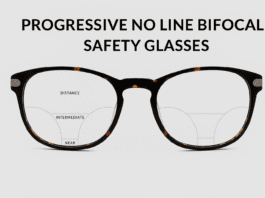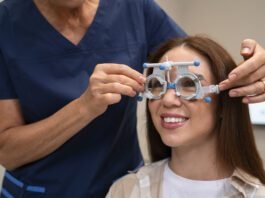Proper eye protection is essential while dealing with potential threats. There are two forms of protective eyewear: safety glasses and goggles. These two eye protections are developed to fit particular workplace conditions and hazards. Each type of eye protection has its advantages and downsides. In this post, we compare safety glasses and goggles to assist users decide whether to use them.
Safety Glasses VS Goggles
Safety Glasses
These glasses protect the eyes from collisions, flying or falling objects, and all forms of radiation. These often have a thin, flexible structure. Furthermore, they have polycarbonate or Triloid nylon lenses, which are extremely durable. Side shields may be incorporated on safety glasses to guarantee further safeguard against side risks.
Goggles
Goggles are a better choice for protection than safety glasses since they fit over the eyes tightly. In locations where individuals are likely to come into contact with chemicals, liquids, and similar items, they are very useful. There are two types of goggles: vented and non-vented.
Key Differences Safety Glasses Vs Safety Goggles
Safety glasses, goggles, and personal protective eyewear are the perfect option for eye protection. They shield the eyes from flying debris, collisions, flames, chemicals, and other dangers. However, there are some important differences:
Protection Level: This kind of covering protects the entire eye area from potentially harmful substances. Safety glasses cover only the forward area of the eyes.
Tight: The goggles are necessary because the protective wrap fits the face more snugly. It simply means that the solution provides a door that only allows limited objects to enter from the sides. Most safety glasses do not completely cover the user’s face like other types of protective eyewear.
Size of the lens: Goggles, of course, have far larger lenses and are free of any obstacles that one would encounter when using glasses. Safety glasses have smaller frames on the sides, and the frame is made of plastic.
However, some safety glasses use temple arms instead of straps. The strapped glasses do not come off easily.
What Aspects Should You Consider While Selecting Your Eye Protection?

Think about what you do and where you do it. What are the dangers to the eyes, flying projectiles, chemicals, gases, dust, and brightly sourced light? Ensure that you select eye protection relevant to the risks at your workplace. Normal eye protection may not be sufficient for use when operating with dangerous substances.
You’ll need to get chemical safety glasses instead. Eye protection goggles with impact-resistant lenses are required for tasks that may involve contact with flying projectiles. Understand your workplace as well, especially if you are an outdoor person. You can wear sunglasses or Varifocal Glasses with progressive lenses to handle glare or sunlight.
Fit and Comfort
When selecting the eyewear it is important to ensure that the protection glasses fit and feel right when worn. Uncomfortable eye protection that slides down the nose bridge or pinches at the temples will only offer temporary protection. When trying on glasses, avoid situations where it is clear that they are not close to your face.
There are removable ear and nose pads whose size you can adjust easily. So that the eyewear lays gently on the contour of the face. Make sure your eyelashes do not touch or come into close contact with the lenses when you blink. If the safety eyewear is uncomfortable, it is easy to avoid using it regardless of the conditions.
Lens Material and Coatings

The lenses are of course fundamental, protecting your real eyes from harm should an unfortunate incident occur. There are many choices – polycarbonate plastic, Trivex, and safety glass, among others. Identify what materials will offer you that level of impact resistance which you desire. Special lens coatings can also do some of the work for the lens.
A coating that eliminates surface scratches and fogging increases both sight and lens longevity. Other useful coatings give protection against UV rays or decrease glare. Some lens tints, such as amber, gray, and silver metallic, improve contrast in poor lighting or low-visibility settings. Ensure that the lens coatings and tints are adequate for occupational use. For example, wearing black or mirror-effect lenses is not optimal for distinguishing colours.
Lens Size and Shape
We prefer larger lenses because they allow us to perceive movement or impediments in the peripheral view. Even the design of the lens has an impact on its coverage. The curved wraparound lenses and panoramic designs also provide side protection. You should also make sure that the lenses you choose are well-vented. So that they do not fog up due to your breathing, especially if you plan to use a face shield.
Updated Prescription Lenses

Most people require glasses for either near or distant vision. There are special types of eye protection for inserting clarity lenses which are updated with new prescriptions. Protective eyewear should not affect the wearer’s eyesight. Thus, choose a type with detachable prescription lenses.
Always ensure your current prescription is not older than one year to have proper vision. Progressive lenses, whether monocular, binocular, bifocal, or multipurpose, are easily fitted. Getting the correct updated prescription is important for the best vision and safety when driving.
Eyeglass Straps and Headgear

It is possible to lose or drop your safety eyewear. Therefore, attachments such as eyeglass straps or headgear can be worn. Headphones’ stability when removed temporarily from the ears is determined by straps. They hold earpieces together and place the glasses around the neck. Another type of protective eyewear is that which comes with your helmet and safety shield and can be easily attached.
Durability
Visit manufacturer specifications or research independent tests on the frames and lenses to see if they are durable. Higher-quality components and unique shielding ensure that your eyewear lasts longer and functions properly. If you plan on wearing eye protection every day for lengthy shifts, comfort and durability are essential. If used for an extended time, replacement costs will accrue with less durable eyewear goods.
Budget
Your money will be a consideration while selecting eye protection. However, proper eye protection is always a good investment because it protects your vision and eyesight. There are numerous offers targeting different categories: low, mid, and high-price segments. First of all, determine the type of goggles with basic characteristics required for your hazards and activities.
Then look for the best product possible that complements your financial capability. If funds are extremely tight, inquire about employer-sponsored vision care plans. The cost of safety eyewear may be offset by claimable amounts under a health FSA. It is always important to save money but one should not compromise for poor eye protection.
Conclusion
Safety glasses and goggles are both effective at protecting your eyes from potential hazards. Which one wins? It is defined by factors such as the type of risk, the amount of comfort, prescription functioning, and ventilation.
Other glasses are appropriate for general use in areas with a danger of flying particles. Or if there is a low risk of UV light exposure but safety is still an issue. On the other hand, goggles are more effective in protecting chemicals as well as liquids by the enclosure feature.



